If your dog gets frightened or stressed at the vet or groomer, or if you find it impossible to trim their nails at home, cooperative care training can make these experiences better for everyone! Being handled can be overwhelming for many dogs, and they might shut down or exhibit aggressive behavior. To keep everyone safe, there are a variety of training skills that can make handling a more positive experience.
Quick Links
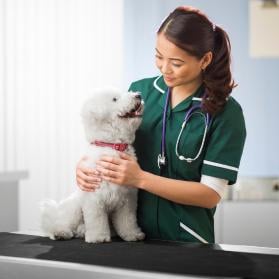
Our mission is to help save dogs' and cats’ lives through our educational content. To support our efforts, this page may contain affiliate links. We earn a commission for qualifying purchases – at no cost to you.
Cooperative care is a type of training that involves teaching dogs to actively participate in their own care, such as grooming, handling, and veterinary procedures. Rather than simply tolerating these procedures, dogs who are trained for cooperative care learn to happily participate in them.
A core aspect of cooperative care training is listening to the dog and giving them choice. Having the ability to opt in and out of something increases a dog's confidence and increases their trust in their handler. This leads to faster training and easier handling in the long run.
There are different cooperative care skills you can train with your dog, such as standing still for grooming or examination, offering paws for nail trimming, laying on their side or back for xrays, stationing for blood draws, taking medication, opening mouth for examination, tooth brushing, ear cleaning, and more.
There are things you can easily start right away at home to start cooperative care training, such as the Bucket Game and the Chin Rest, explained in detail below. However, it is very helpful to have the guidance of a certified training professional to start on the right paw with cooperative care. A certified dog trainer will be able to identify priorities for cooperative care skills and break down the steps based on your dog's particular needs and responses.
The Bucket Game is a popular cooperative care training technique that helps dogs develop a positive association with handling and procedures. Created by Chirag Patel, this game gives the dog a way to say, "You can start now," "Okay, continue," or "Wait, stop" – simply by whether they are looking at the bucket or not.
Here's how to get started:
Here's a video of the Bucket Game creator Chirag Patel explaining this method:
A chin rest is where your dog rests their chin in the palm of your hand and is useful for positioning during exams or handling, such as when receiving vaccinations. The chin rest is another option that you can use similarly to the Bucket Game, where as long as they keep their chin in your hand, the handling can continue. If your dog pulls their hand out of your chin, then the handling stops.
Here's how to train a chin rest for your dog: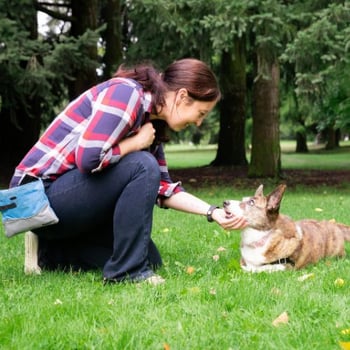
Here's a video showing the first steps of this process:
Stop at your vet clinic or groomer with your dog for quick “happy visits." Bring your dog in for some snuggles and treats. If they're up for it, practice having your dog get on the scale and have a treat party when they do! If your dog struggles with getting on the scale, bring along a mat or towel to place on top before encouraging your dog to sniff it and perhaps put a paw or two on it. A non-slip soft surface can make the scale surface less intimidating.
Doing these happy visits can help prevent or break the association of the location with stressful events like getting vaccinations or baths. Call your vet office and groomer prior to dropping in to find out what days and times work best for these happy visits.
If your dog doesn't even want to go into the lobby, you can still do a quick stop in the parking lot to eat some treats or do a quick trick training session. If available, perhaps a staff member can come out to say hi to your dog and give them a treat. The idea is to create more positive associations when showing up at the vet clinic or grooming salon. You don't have to go in the first few times – go at your dog's pace!
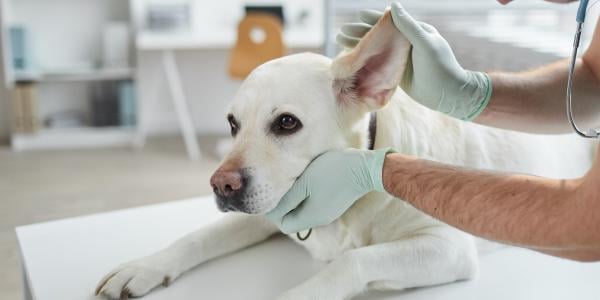
If your dog gets stressed, fearful, or overwhelmed with a particular part of handling, such as nail trims, you can focus specifically on changing their emotional association with that experience. This is done through a process called counterconditioning. By pairing small steps of the entire process with high-value food, with repetition and patience, your dog begins to be able to cope with having their nails trimmed.
Counterconditioning is also a part of overall cooperative care training and is very systematic. Here's an overview of what counterconditioning would look like to help a dog feel better about getting their nails trimmed:
Here's a video example of counterconditioning nail trims:
Over time, you'll work through the entire nail trimming process, and your dog will feel more comfortable with getting their nails trimmed. They associate the not-so-fun nail trim with a yummy treat happening, making it easier to cope with the not-so-fun part.
The steps above can be applied to any experience that a dog finds overwhelming, such as hair clippers, nail grinders, and tooth brushing. You just need to break down the entire process into small steps. The counterconditioning process takes time and patience, always moving at your dog's pace. If your dog is struggling with a particular handling experience, connect with a certified dog trainer for help.
Consider whether your dog may benefit from calming supplements or anti-anxiety medication prior to visits to the vet or groomer. Every dog responds to various calming options differently. Your dog may respond well to calming pheromones spritzed on a bandana that they wear, while others may benefit from supplements.
For dogs that get especially stressed or difficult to handle during trips to the vet, talk to your veterinarian about pre-visit medication options you can administer at home, and also check to see if your vet or groomer offers house calls. Either or both of those may help diffuse the situation enough to allow even the most stressed pup to get the care they need and deserve.
Dog Anxiety Treatment, Medication, and Supplements
Removing the Fear and Stress from Your Dog's Vet Visits
How to Help Your Dog Love the Groomer
Help Your Dog Feel Better About Baths
There are lots of cooperative care skills you can work on with your dog. Here is a list to get you started:
The Pet InfoRx® is made possible, in part, through our partnership with AlignCare®.
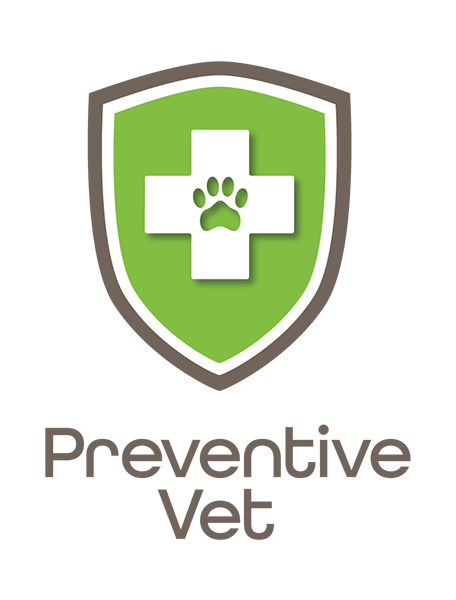
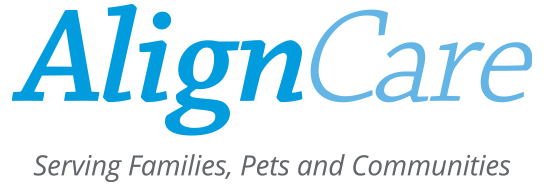
© Preventive Vet. All rights reserved. PreventiveVet.com
